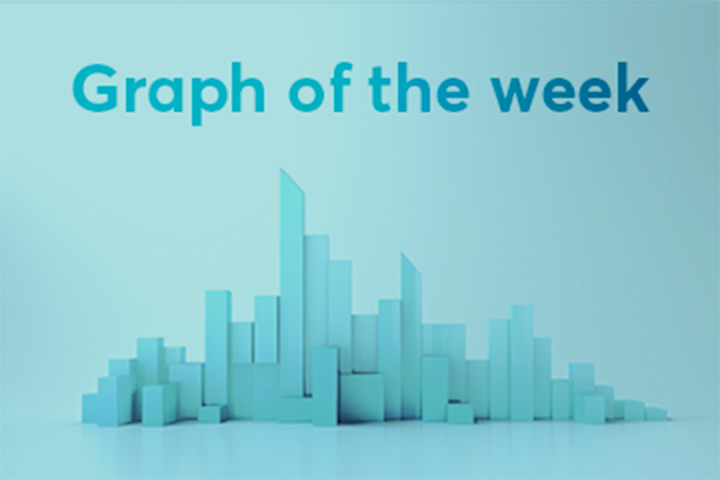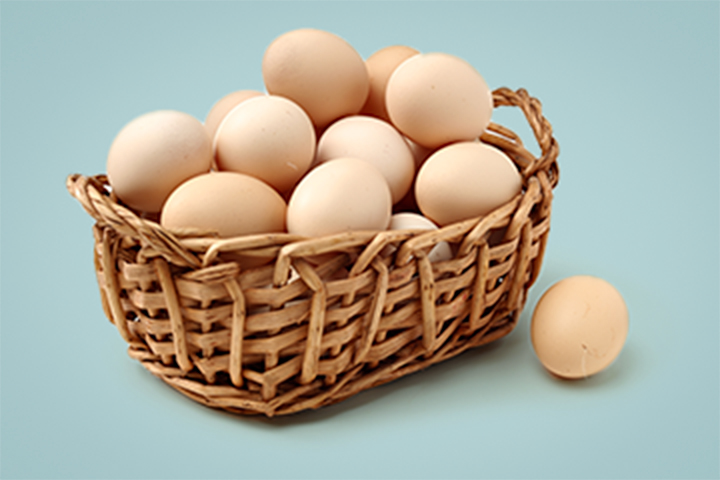After the gold rally, is it silver's turn?

Keytrade Bank
keytradebank.be
June 19, 2025
(updated June 23, 2025)
3 minutes to read
If you've jumped on the gold train too late, it could be the right time to look across the platform and see whether the Silver Express is getting ready to depart.
The price of gold has seen an impressive climb in recent times. In April 2025, the precious metal hit a record high of nearly USD 3,500 per ounce (31.1 grams). By way of comparison, this is significantly higher than the previous peaks of around USD 2,070 seen in 2020-2022. In theory, there is even room for improvement, too: the record price of USD 875 in 1980 would now be around USD 3,608 when adjusted for inflation.
The rise of gold is driven by a whole host of factors, however. First and foremost, investors are seeking a safe haven in times of persistent inflation and economic uncertainty. Geopolitical tensions and concerns about government debt also play a role. What's more, central banks are also building up gold reserves. China's central bank, for example, has been keen to buy increasing amounts of gold in recent times. All of this strengthens gold's image as the ultimate safe haven and drives up the price.
Nevertheless, many investors have missed the boat. Gold is an outlier. The precious metal does not generate interest or yield a dividend, and timing is also key. The gold price has seen a rapid rise to keep doubtful investors on the sidelines.
Now that gold is trading at a high level – with a rise of around 40% year on year (as at June 2025) – some may well feel uneasy about buying at this point. For those arriving late to the party, the question they should ask themselves is, have I missed the boat, or is there an alternative?
Silver in the spotlight – catching up after the gold rally
The alternative could be silver. Silver often follows the trend set by gold, albeit with a bit of a delay and greater volatility. The price of silver has started to surge in recent months, jumping almost 9% in one week to over USD 36 per ounce – its highest level since 2012. Although gold has climbed more sharply in the past, the difference has now all but disappeared, as both precious metals are up about 25% this year (situation as at June 2025).
This means that silver has already caught up with gold. At the beginning of April, investors had to fork out more than 100 ounces of silver to buy one ounce of gold – an exceptionally high ratio that made silver very cheap when compared to gold. However, the recent rise has seen the gold/silver ratio fall towards 92. By way of reference, the five-year average stands at around 82, and the long-term historical average is even lower at around 60. This means silver remains undervalued compared to gold according to that measurement, although the difference is less extreme than that seen a few months ago.
Investors have clearly noticed the potential value hiding in silver. According to Bloomberg, silver ETFs have seen a strong influx in recent times – the strongest increase since February – suggesting renewed interest from investors. Manufacturers of silver coins and bars are also reporting strong demand.
Logic suggests that anyone who missed out on the gold rally can still tap into the precious metal trend with silver, which is still well below its historic highs (around USD 50 per ounce in 2011 compared to around USD 37 per ounce in June 2025).
What potential does silver have?
Several indicators and experts point to room for the silver price to climb even further. However, an increase of 35% from its current level would be required to match the record price of USD 50. Gold, on the other hand, is already flirting with new records. This relative valuation gap suggests potential upward momentum, particularly if macroeconomic conditions remain favourable. Bloomberg analyst Mike McGlone believes the USD 35 threshold could be a floor. In his opinion, a silver price of USD 40 is within reach if the current trends continue (situation as at June 2025).
It is also worth noting that the supply and demand balance also looks positive. The Silver Institute expects demand for silver to grow even stronger in 2025 than the progress seen in 2024, mainly thanks to the continued roll-out of renewable energies and electrification around the world. The Silver Institute believes that demand for solar panels and electric vehicles, in particular, will hit new heights. Silver will gain dual momentum if these industrial drivers are combined with sustained interest among investors (e.g. due to continued uncertainty).
In other words, silver represents a great opportunity to follow the trend set by gold for investors who still want to jump on the bandwagon. There are no guarantees, of course – and we'll touch on that later – but it's safe to say silver is certainly attracting attention.
What drives the silver price?
Silver is a unique precious metal as it has two roles – it is both a valuable industrial metal as well as an investment that is seen as a safe haven. Such a dual personality makes sure that the silver price is driven by multiple factors:
- Industrial demand: Roughly half of global demand comes from industrial applications. Silver is essential in electronics, solar panels, medical equipment, the automotive industry and a large number of high-tech applications. As an example, industrial silver consumption rose by 7% to over 700 million ounces in 2024. According to the Silver Institute, this increase was due to the huge numbers of solar farm installations as well as the rise of electric vehicles and charging infrastructure. New trends such as 5G, automation and AI (with high energy requirements and therefore a demand for silver) also underpin industrial silver consumption. In other words, the green transition and technological advances are embedding a structural demand for silver.
- A safe haven and speculation: Like gold, silver is a safe haven in times of economic or geopolitical uncertainty. When inflation surges or a crisis is looming, investors seek protection in tangible assets and precious metals. Silver benefits from this approach as gold's little brother. In practice, this can be seen in the surging sales of silver coins during periods of uncertainty, or in investments in silver trackers and funds. However, one difference with gold is that central banks do not opt to buy silver; gold is held as a reserve by almost all central banks, while silver is not. This means that demand for silver comes primarily from the private sector: both from private investors and professional investors such as hedge funds. The speculative nature of silver means that the price can fluctuate wildly when certain technical levels are reached, such as sudden buying waves or a short squeeze. This means silver is more volatile, but also offers opportunities for quick profits.
- Supply and mining production: Silver has its own dynamics when it comes to the supply side. Unlike gold, silver is often a by-product of other types of mining (such as lead, zinc or copper mining). One crucial fact is that the silver market has been squeezed in recent years. According to mining company First Majestic Silver Corp, the world has been experiencing a silver deficit of around 240 million ounces per year for four years in a row. In other words, demand has been exceeding supply from mines and recycling, which in turn has reduced stock levels. This shortage – partly driven by high industrial demand – has contributed to the recent increase in price. At the same time, higher prices are encouraging the mining sector to produce more, and the production of silver has been climbing out of a trough since 2020. Several new mining projects are in the pipeline around the world: it is estimated we will see nine new, large mines in the next five to ten years, equating to an additional 44 million ounces per year. A larger number of mines and more investment mean greater supply in the long term, even if it may be a slow process. Nevertheless, the shortage is a real issue in the short term, especially now that geopolitical factors are coming to the fore. Mexico, for example, is the world's largest silver supplier, and political uncertainty and tariffs on Mexican exports are having a significant, direct impact on the silver price.
- Macroeconomic factors: Like gold, silver reacts to the economic climate as a whole. Low real interest rates and a weak dollar have traditionally been favourable to precious metals, while high interest rates and a strong dollar act as headwinds (as precious metals do not yield interest and are priced in dollars). An interesting aspect to consider is how silver behaves during economic cycles: at the first signs of economic malaise, gold is often in greater demand than silver. As silver has an industrial component, the fear exists that a recession will drive down the demand for silver in manufacturing. Gold usually outperforms silver when we see early signs of stress. However, if central banks subsequently open the money tap or the economy picks up again, silver can rally to catch up. Historically, we saw this pattern play out in the period 2009-2011. During the financial crisis, the gold-silver ratio peaked at around 80, after which silver rose by 81% in the recovery period in just one year, compared to 44% for gold (according to figures in the Wall Street Journal). After the panic of March 2020 too (when the ratio reached 113), silver rose +73% in the following year, while gold only rose +8%. This illustrates that silver performs best in the wake of recovery and inflation, while gold excels in times of acute crises.
In summary, the price of silver depends on a combination of industrial trends, investor sentiment and macro indicators. This mixture makes silver more volatile than gold, but also offers a unique diversification profile.
How can you invest in silver?
There are several ways to invest in silver, each with its own pros and cons. Here are a few popular options:
- Physical silver: You can buy silver in the form of coins or bars and keep them yourself. The major advantage here is tangible ownership without counterparty risk – the silver is yours, irrespective of what happens on the financial markets. The disadvantage comes from the practical side of things, as safe storage may involve costs (safe rental, insurance) and cashing it in is more complex (you have to find a buyer or sell it back to a dealer). The buy and sell prices of coins are also often slightly higher than the purely theoretical silver price (due to processing premiums and profit margins). Moreover, silver is greater in size: you get more silver for your money than you do gold. An investment of USD 100,000 in gold weighs around 0.9 kg, while USD 100,000 in silver weighs around 85 kg (situation as at June 2025).
- Trackers/ETFs: Silver ETFs (exchange-traded funds) or ETCs (exchange-traded commodities) are listed trackers that closely track the price of silver. They are often physically hedged (with silver in a safe as collateral) and they move with the silver price (less small management fees). They have the advantage that they are easily traded via your custody account and you don't have to worry about storage. You also gain exposure to the silver market in one transaction. The disadvantages are that you are dependent on the financial institution that manages the silver (a form of counterparty risk). You also do not get the 'experience' of holding a physical precious metal in your hands, which is the charm for some.
- Mining shares: One alternative is to invest in companies that produce silver. Some large silver mining companies (such as Fresnillo, Pan American Silver and First Majestic) are listed on the stock market. If you buy such shares, you are speculating on the price of silver, albeit indirectly. The advantage is that mining companies often have a leverage effect: if the silver price rises, the mining company's profit margins can surge as a percentage, which leads to stronger price rises than the silver price itself. What's more, some mining companies pay out dividends, which yields a return while you hold your shares. There are also significant risks, however. Mining shares can disappoint due to operational issues, rising costs, political risks in the countries in which they operate, or mismanagement. It is worth remembering that a mining company can perform poorly even if silver remains stable. This makes individual mining companies suitable for anyone who can make a good assessment of the company and believes in specific growth opportunities – or you can diversify via a mining index in the form of a fund or an ETF.
- Derivatives: Derivatives are also an option for trading in silver for experienced investors. As an example, you can use futures to leverage speculation on a rise or fall in the price of silver. Options offer the chance to take advantage of price movements with limited capital or to hedge positions. Furthermore, some issuers also offer turbos or warrants on silver. These instruments often offer a higher leverage – you can take a larger position with a relatively small commitment, which can result in strong profits with the right move (and high losses with the wrong move). You can also go short (i.e. take advantage of a price fall) with certain derivatives. This entails a high risk, however, as a slight counter-movement in the silver price could wipe out your entire investment. These products require constant monitoring and expertise, and are not recommended for beginners or anyone who wants to sleep comfortably at night.
Before investing, be sure to read up on the main characteristics and risks of financial instruments.
Silver in the portfolio
Like gold, silver is often valued for its benefits when it comes to diversification. Precious metals generally exhibit a low correlation with traditional investments such as shares or bonds, particularly over longer periods. A little piece of silver in a portfolio can therefore help to ease the pain in times when other asset classes are lagging behind. Historically, precious metals have performed well in environments of high inflation or financial stress, when traditional assets struggle.
In essence, silver kills two birds with one stone: you receive some cover against financial disasters and gain an investment in growth stories (such as clean energy). This is a combination that makes silver unique. However, it is important to choose your position in such a way that it suits your risk tolerance and objectives. Silver is not something that is all or nothing, but rather a hint of spice in an investment portfolio.
You should also be aware that silver is much more volatile than gold, with the monthly price fluctuations for silver having been about twice as large as those for gold from a historical perspective. While gold is more stable relatively speaking, silver regularly experiences sharp ups and downs. This was seen in 2020, for example, when silver fell rapidly to USD 12 in March 2020 and then almost tripled to USD 30 in less than a year. It's a roller coaster that is not for everyone.
Investing in silver?
- Log in to Keytradebank.be on your laptop or desktop
- Click on Advanced at the top of the search window
- Search for the term 'Silver' or the name of the share in which you want to invest


